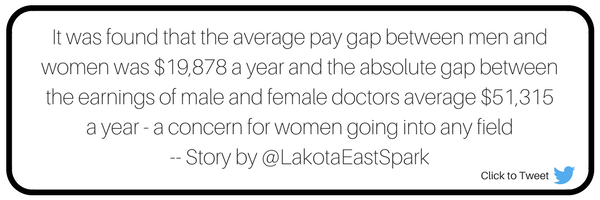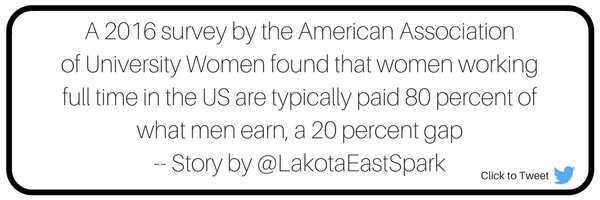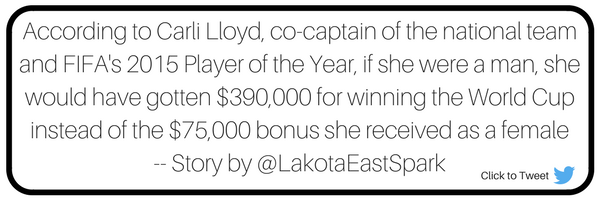Story by Noor Ghuniem | Art by Selena Chen
Less than one percent of one-tenth. That is the fraction in which actress Michelle Williams was paid in comparison to her male co-star Mark Wahlberg.
As equal co-stars, Mark Wahlberg was paid $1.5 million for the reshoot of “All the Money in the World,” whereas Michelle Williams was paid a total of less than $1,000. This discrepancy between the two co-stars is similar to the pay between the highest paid actor and actress. According to Forbes, 2017’s highest paid actress, Emma Stone made a gross revenue of $26 million, whereas the highest paid actor, Mark Wahlberg, made $68 million.
This discrepancy between the film industry and its pay is also apparent in the Science, Technology, Engineering and Mathematics (STEM) field. East Senior Maryam Faroqui plans on going into the medical field in the future and noticed the difference of pay between men and women in that field of study.
“I definitely believe the wage gap is real and exists,” Faroqui says. “I’m planning on going into a medical profession and when researching I have found a definite difference between how much women and men get paid.”
The Journal of the American Medical Association Internal Medicine published a study in 2017 where researchers from Harvard Medical School and Massachusetts General Hospital analyzed the salaries of 10,241 physicians in 24 public medical schools across the country.
It was found that the average pay gap between men and women was $19,878 a year. The absolute gap between the earnings of male and female doctors averaged $51,315 a year. Additionally, the New York Times reported in 2016 found that in surgical specialties, women make roughly $44,000, oncologists make $38,000 and obstetrician-gynecologists make $36,000 less.
This becomes a concern for a multitude of women going into any said field, even high paying professions. Faroqui is no exception.
Somia Faroqui, Maryam’s mother, is irritated that her daughter will not have the same pay as her male counterparts and believes “she deserves every penny a male colleague with the same qualifications would earn.”
“It angers me that Maryam will be working every bit as hard as her male colleague, maybe even harder, but she will be paid less because of her gender,” Somia says. “A variable out of her hand, but a variable that carries no justification for her lower pay.”
Professor David Clingsmith, who specializes in Macroeconomics at the Case Western Reserve University, synthesizes on why the pay gap exists.
“The gender gap in wages has a number of causes, and the relative importance of these causes has changed over time,” Clingsmith says. “Some important causes are differences in occupation, education level, work hours, age, continuity of employment and wage discrimination.”
In 2016, the American Association of University Women (AAUW) found that women working full time in the United States (US) typically were paid 80 percent of what men were paid, a gap of 20 percent.
The Center of American Progress found that women still need an additional degree to make as much men with a lower degree throughout the course of a lifetime. For example, a doctoral degree to a woman would be the same as a bachelor degree to a man.
According to Associate Professor of Business and Economics at the University of Cincinnati Blue Ash College Michele D. Kegley, she says that there has been a long discrepancy between pay amongst gender.
“There has been long discussions within the two genders of what is considered eual and what is not,” Kegley says. “Gender wage gap has existed for as long as history has existed as well. Women are known to be subordinate to men throughout time and that has definitely reflected with the wage gap.”
A study conducted by the AAUW in 2016 found that in each level of education, the men earned more based on their degree. A man with the same bachelor’s degree as a woman on average would make about 500 dollars more in median weekly earnings.
“When I was a student at The University of Alabama (UA) my statistics professor gave us a very good example on this subject. The school paper had written an article stating that female professors at UA were paid less than men,” says an anonymous source from the Case Western University economics department. “My professor asked to look at the data. What he found was that women were not paid less for the same job, in fact they were often paid more for the same job.”
This was because all professors do not get paid the same. Finance, engineering and accounting professors are paid much more than English, social work and nursing professors. The only way to have any engineering professors is to pay a higher wage to attract them to teach. English PhDs are not as valuable because outside of teaching there are not a lot of jobs that require that degree.
The AAUW found in a 2016 study that through a multitude of occupations, women are paid less than men. In food services they are paid 74 percent less, 853 dollars versus 632 dollars in median weekly earnings. Furthermore in social workers, they are paid 85 percent less. The same exact jobs with the same exact specialties and the same exact need for workers, yet the women are paid less in the weekly median.
“I think one really good example to look at when you’re trying to figure out if the pay gap is real is the US soccer team,” Maryam says.” I know I’ve seen a lot of uprising about them being paid less on Twitter.”
Evidentially, the US Women’s soccer team is paid less than the US Men’s soccer team. The team earned roughly a quarter of what their male counterparts did in 2016, even though they generated more in revenue than the men’s team. Also, the US Women’s soccer team actually won the World Cup, whereas the men’s soccer team had not.
“If I were a male soccer player who won a World Cup for the US, my bonus would be 390,000 dollars,” Carli Lloyd, co-captain of the national team and (Fédération Internationale de Football Association) FIFA’s 2015 World Player of The Year says in an essay for The New York Times. “Because I am a female soccer player, the bonus I got for our World Cup victory last summer was 75,000 dollars.”
In the US, women working full-time made 80.5 percent of men last year, a 1.1 percent increase from the year before, according to the US Census Bureau in 2017. Researchers at the AAUW found that if the minimal change continues at the same pace as it has done for the past fifty years, it will take 44 years—or until 2059—for women to finally reach pay parity.
“I think that the gap will continue to close if we can address its causes in job inflexibility and high rewards for long hours,” Clingsmith says. “I think it is very important that we try to figure out the reasons why there is a wage gap and not immediately conclude that the reason is direct discrimination. The reason is that only by understanding why are we likely to hit on what the right solutions are.”
In a recent Spark survey, 60 percent of the 316 East students surveyed said that they believe there is a gender wage gap. Luckily, a closing wage gap creates a hopeful future for future employees and employers graduating from high school and moving into the workforce in the forthcoming years, but still will remain in issue until it is completely closed.
“I’m happy to hear that it is closing, but I still don’t understand why it ever existed to begin with, and I don’t think I ever will,” Maryam says. “I deserve every bit of everything that a male receives. I’m a girl. That’s empowering, not something to be punished for.”











































































































